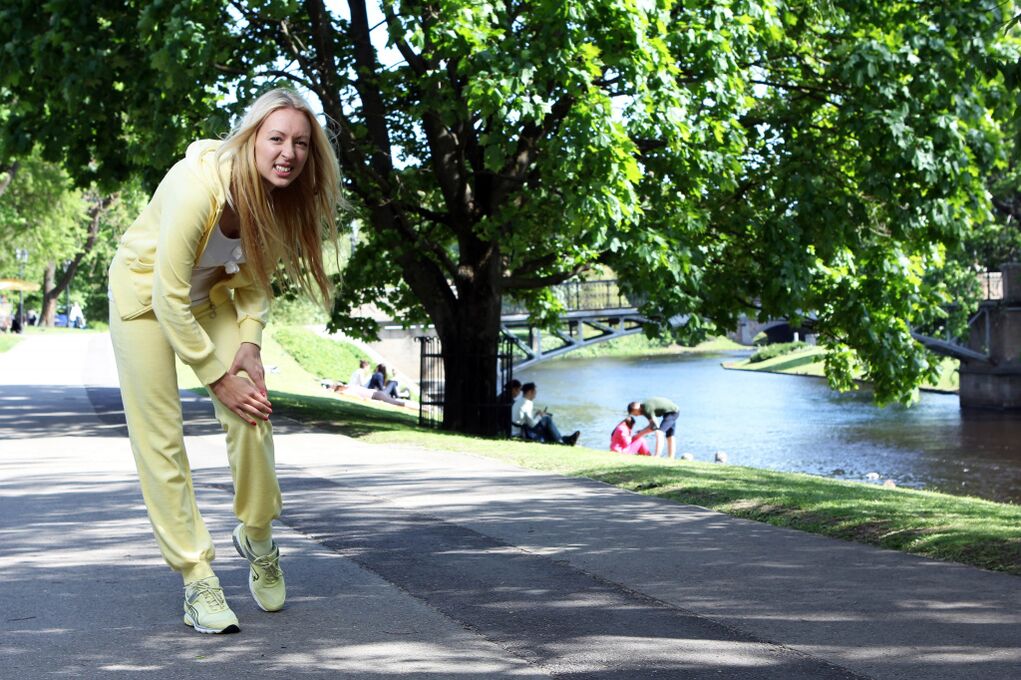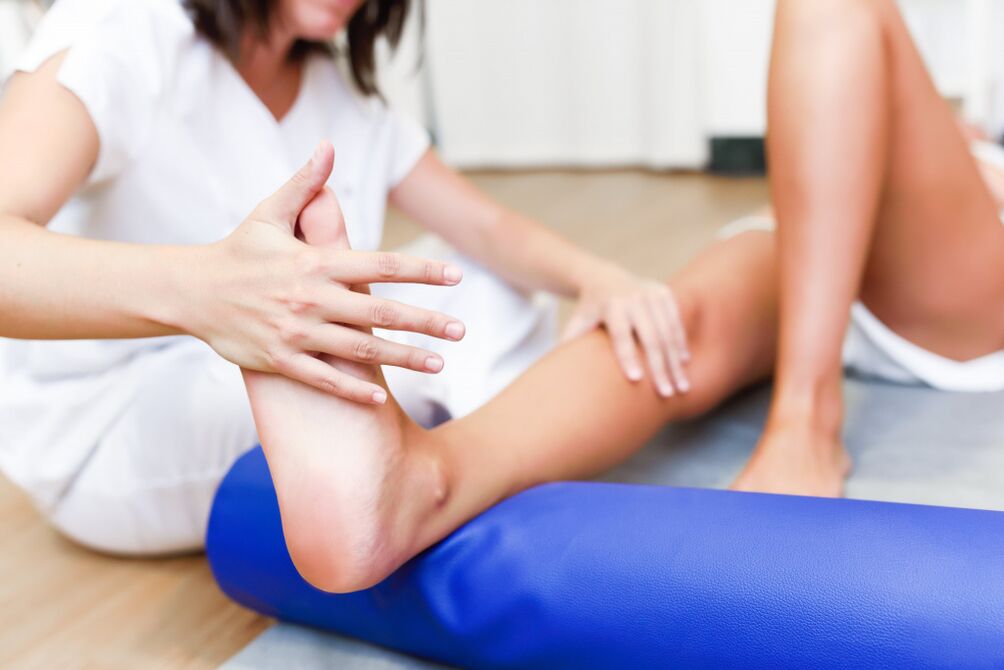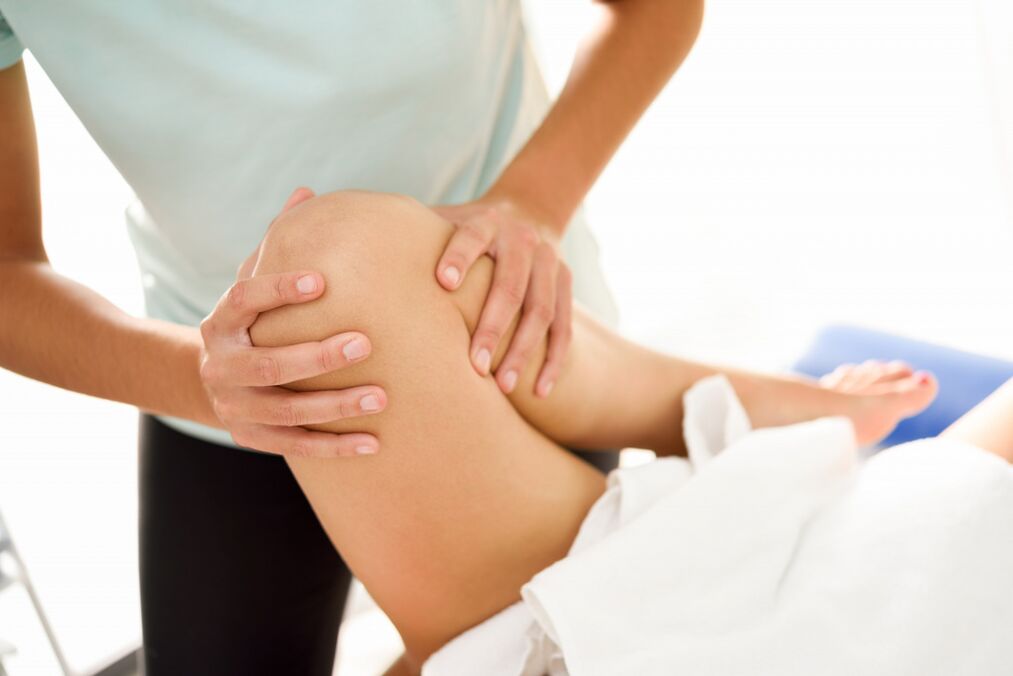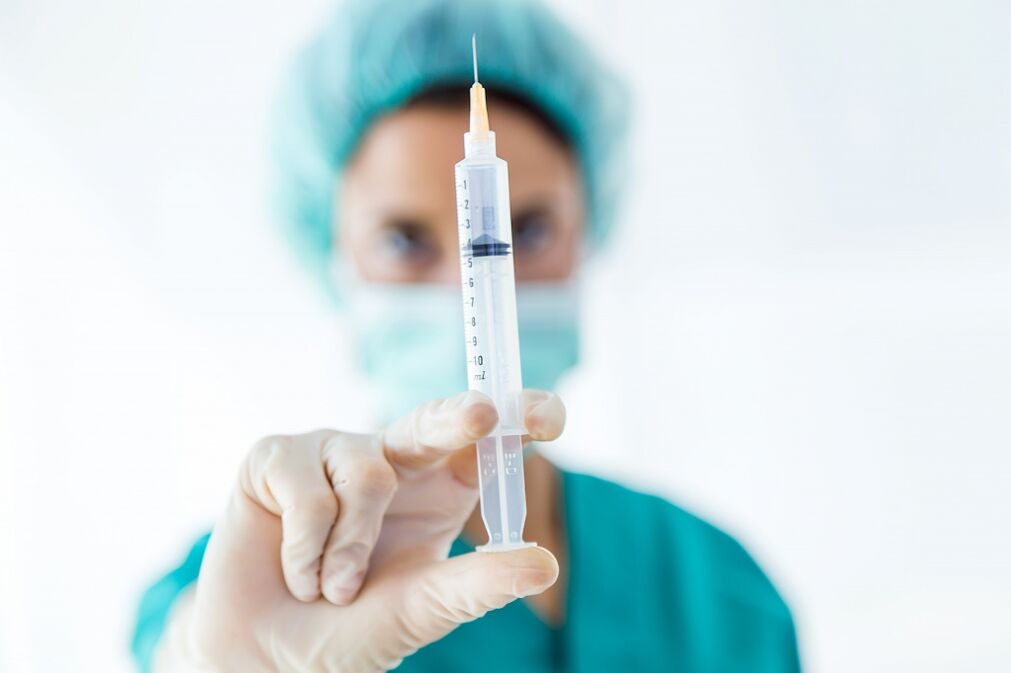Knee arthrosis-This is a degenerative-dystrophic disease of cartilage, which leads to exposure to bone heads and impaired mobility in the joint.The disease has a non -inflammatory nature and slowly progresses - the transition from the initial stage to the damage takes several years to several decades.The osteoarthrosis of the knee joint is included in the 5 most common causes of damage and damage worldwide.
More than 20% of people over 55 are subjected to knee arthrosis (gonarthrosis), but the disease is quickly young - more and more symptoms are manifested at the age of 25.

Over time, treatment of knee arthrosis will help to avoid complications and destruction of cartilage.
Signs of knee arthrosis joint
The wear of the articular cartilage is accompanied by characteristic characteristics whose intensity depends on the stage of the disease.Most often patients complain about:
- Morning stiffness and reduction of mobility in the joint (awakening -P is required);
- Pain and knee discomfort, which intensify after exercise (long walking, running or standing) and are in a decline when resting;
- On the 2nd stage -SO -Called Start Beals, which appear after a long stay in one position;
- increased fatigue, which is often written off to age -related changes;
- Dry rough crunch, which is regularly repeated at knees and bending;
- edema and other symptoms of inflammation that occur in the second stage of the disease due to trauma to peroster tissues;
- Mette -sensitivity, increased symptoms in the cold season.
When you try to bend your knee hit by gonarthrosis, there is acute pain and a feeling of physical obstacle.In the short stages, even with the treatment of knee joint arthrosis, patients are disrupted in patients (it becomes enjoyable, patients go on firm feet), deformity of the lower limbs in the form of letters "O" or "X" occurs.
The insidiousness of the disease lies in the fact that it can occur in a hidden form for years, and the first significant symptoms often appear only at stage 2 - when complete restoration of synovial cartilage is no longer possible.
Therefore, it is important to consult a doctor at the first signs of knee discomfort - for example, weak, as if pulling pain that occurs with insufficient production of synovial fluid.Remember: knee pain is not the norm, regardless of age.Timely examination and treatment of first -degree knee arthrosis can completely prevent you from painful pain in the joints of old age.
What happens if knee arthrosis does not cure?
In the case of self-medication, failure to comply with the doctor's recommendations or lack of treatment, osteoarthrosis of the knee joint progresses on average 3-8 times faster than with complex therapy.If gonarthrosis occurs aggressively, the patient may lose the ability to move normally before the retirement age.
Particularly important is the effective treatment of knee arthrosis at an exacerbation stage.Raw weather, physical or emotional stress, allergies, poisoning, moving to the region with another climate - in a word, any shake for the body can provoke it.The exacerbation of arthrosis continues with the destruction of a large amount of chondrocytes.In response, the body produces enzymes that are designed to process and remove dead cells.However, if their concentration is too high, healthy cartilage areas suffer - cell membranes become larger, erosion foci appear on the synovial seizure of the joint.This process, if not stopped by treating knee arthrosis with drugs, can flow within a few weeks and with chronic stress, lack of sleep or insufficient diet, constantly.
In the end, without treatment, knee osteoarthrosis leads to a complete decrease in the lumen of the joint due to the growth of osteophytes.The gap required for normal movement is closed and the patient cannot bend the legs even at 30-45 °.The difficulty is not only climbing the stairs, but also an attempt to climb the sofa or ordinary movement.This condition is accompanied by pain that ordinary analgesics do not help.In such cases, one option for treating knee arthrosis remains - surgical, with complete replacement of joint architecture with prosthesis and subsequent long -term rehabilitation.But in this case, most patients cannot return to a completely normal life.
Treatment of osteoarthrosis of the knee joint
Depending on the stage of the disease and the condition of the joint, conservative or surgical treatment of knee arthrosis.
Treatment of knee arthrosis is always performed by conservative methods - in the case of a successful combination of circumstances and good self -discipline, the patient can be obtained or constant remission.
Treatment of knee arthrosis of the second degree, as a rule, is built on the use of all conservative effects, but the doctor may decide for minor surgical interventions in the joint if the disease develops aggressively or with complications.
Treatment of knee arthrosis of 3 degrees almost always implies surgery.
The complex conservative treatment of knee arthrosis involves the removal of pain and inflammation, the restoration of cartilage and an increase in the volume of movement in the joint.For this, the patient is prescribed an orthopedic regimen of loading and rest, system and local drugs (hormonal and non -hormonal anti -inflammatory, analgesics, chondroprotectors, etc.).Innovative biological methods are also widespread - injections of medicines for the treatment of knee arthrosis joint directly into the joint sac.At the same time, PRP infections (blood plasma enriched with platelets) are used, as well as stem cell injections derived from the patient's own fat.In parallel are related auxiliary and rehabilitation methods - physiotherapy, massage, manual therapy, therapeutic gymnastics.
Surgical treatment of knee osteoarthrosis is performed in cases where the medicines are powerless.With this pathology, the doctor may prescribe the following interventions:
- Knee arthroscopy.The collective name for a group of minimally invasive operations aimed at removing the broken joint tissue or osteophyte area, or partial cutting of the joint.It allows you to slow down or turn off the prosthesis as well as eliminate discomfort in the early stages of the disease.It is mainly used for the treatment of knee arthrosis in patients under 60 years of age.
- Osteotomy.Operation to cut out part of the bone and adjust the axis of the load on the sore knee, allowing you to slow down degenerative changes.It is usually performed in the treatment of knee arthrosis of the 2nd degree.
- Endoprothetics.Partial or complete replacement of the knee joint with a titanium implant, which serves for 15-20 years.This technique is an exceptional measure as it carries certain risks.It is recommended for patients over 55 years.
All these operations require the recovery period and have a number of contraindications, so the best option remains prevention (exercise therapy, chondroprotectors) and treatment of knee arthrosis in the early stages.
In addition to the basic therapeutic techniques, diet therapy and other methods of weight loss are used.Dressings and other orthoses (walking cane, orthopedic insoles, etc.) are used to unload the inflamed joint.
The treatment of knee arthrosis is prescribed by an A-rumatologist or an orthopedist.At the first administration, he palpates the joint, does motor tests and then directs the patient to tomography or radiography.
Therapeutic Gymnastics for Knee Arthrosis
Medical physical education for the limbs of the lower belt is considered to be the most effective method of reducing pain and treatment of arthrosis of the knee joint at the first degree.The first results of therapeutic gymnastics appear after 2-4 weeks of continuous classes.Continuity in the treatment of knee arthrosis is one of the main factors that affect the effectiveness of exercise therapy.A full lesson is performed once a day every day, it is also recommended to do at least 3-4 warm-ups during the day.

Therapeutic gymnastics for knee arthrosis during periods of remission will help relieve pain syndrome.
The main task of exercise in the treatment of knee osteoarthrosis is to strengthen the muscles of the thigh and lower legs, maintaining the elasticity of the ligaments and tendons, as well as the fight against muscle atrophy that is characteristic of arthrosis.This allows you to transfer the load from the joint to the periarticular structures - and thus slow down the mechanical abrasion of cartilage, to reduce inflammation.
Exercises for the treatment of arthrosis knee are performed for both legs!When acute pain occurs, the lesson should be stopped or continued at a less tempo.
- Starting position - lies on your back.One leg is extended to the floor, the other is raised 90 ° (the lower leg is parallel to the floor).We make movements with the lower legs up and down as far as the amplitude of movements in the joint.
- Starting position - lies on your back.We do the bicycle exercise.
- Starting position - lies on the stomach.For our part, we mixed our feet, trying to bring the heels as close as possible to the ass.
- The starting position lies on the side, the arm bends under the head or stretched over the head in a line with the body.The other hand rests on the side.We make swings upside down.We change the country.
- Starting position - lies on your back.We pull our feet forward on the floor in front of the heel (by ourselves), the socks look "ourselves".
- Starting position - lies on the stomach.We do the boat exercise.If physical fitness does not allow, we put our palms on both sides of the chest and alternate, restoring our feet, experiencing stress in the back of the thigh and lower leg.
- Starting position - lies on your back.We turn on our feet, trying to describe the socks with socks.
- Starting position - standing next to the wall.Slowly and smoothly squat without looking with your back from the wall to distribute the load.When the legs are bent at the knees up to 90 °, we begin smoothly upwards.
- The starting position is.Alternatively, we wave our legs forward, back and sideways.
Please note: Therapeutic gymnastics after joint surgery has its own specifics and changes depending on how many days have passed since the surgery.He is prescribed by a surgeon or rehabilitologist.
Knee arthrosis massage
The therapeutic massage for knee arthrosis is performed on both legs.At first, at least 10-12 sessions are needed for a rehabilitologist or equipment for hydromassage equipment, but a simple common strengthening massage can be performed at home.It includes the following types of movements:
- Surface stroking and rubbing (up and down, software and back clockwise);
- drilling and stretching with the tips of deeper fabrics;
- Tighten and tap the skin.

Massage with knee arthrosis should be performed by a specialist who will not harm the patient's joint.
Self -massage can be combined with the treatment of knee arthrosis with medicines: it will not be unnecessary to apply a warmed ointment or conditioner before or during the session.You can also take a warm bath before the procedure.
Important: Massage is contraindicated in patients with symptoms of inflammation (osteoarthritis or exacerbation of arthrosis).In this case, therapy for the acute phase is required.
Dietary for arthrosis
The standard protocol for power in the treatment of knee arthrosis is required:
- Limit products and dishes rich in simple carbohydrates (white bread, pastry, snacks, sweets, potatoes, sugar);
- exclude processed (ready -to -use) and rich dishes - fast food, midfield products, sausages;
- Refuse alcohol, decodered coffee and fatty meat.
Instead, you should include in the menu:
- germinated and whole grains dishes;
- Thick fish from the northern seas and dietary meat of poultry;
- cartilage (ears, nyushki, legs and other parts rich in collagen), cold men and jelly;
- Vegetables and fruits rich in vitamins and antioxidants (more special, vitamins A, B12, C, E);
- Nuts and other sources of fatty acids and valuable minerals.

The knee arthrosis diet provides a balanced diet that helps to repair cartilage tissue.
The treatment of knee arthrosis is also recommended with medicines - vitamin -mineral complexes (2 courses).
Physiotherapy to treat knee osteoarthrosis
The following physiotherapy procedures are used to effectively treat knee arthrosis and enhance the action of drugs:
- magnetotherapy;
- laser therapy;
- UHF;
- ultrasound therapy;
- Amplipulse;
- electrophoresis (including medicinal);
- Ozokerite and Paraffin applications;
- thermotherapy (cryotherapy, inductothermia);
- phonophoresis;
- Balneological therapy (sulfuric hydrogen sulfur).
Acupuncture in the treatment of knee joint arthrosis 2 degrees is generally not used.
Before you visit the procedures, it is necessary to consult a doctor - many types of physiotherapy are contraindicated in exacerbation of the disease.
Medicines to treat knee arthrosis joint
The treatment of arthrosis of the knee joint with drugs is performed symptoms and the individual response of the patient to the selected medicines is taken into account.Drug therapy - injections, ointments or tablets for the treatment of knee arthrosis - courses are usually prescribed or if necessary.

To choose the right medicine for the treatment of knee arthrosis, consult a doctor who will choose the necessary medicines after the study.
There are several directions in the treatment of knee arthrosis: relieving the patient's life, improving cartilage nutrition, cartilage regeneration and maintaining the norm of the musculoskeletal apparatus.
Non -steroidal anti -inflammatory drugs
To relieve the exacerbations of NSAIDs in tablets or capsules, they take courses (about 12 days) or if necessary, depending on the intensity of the pain syndrome.The uncontrolled administration of NSAIDs with impaired instructions or recommendations of the doctor is filled with a stomach or intestine ulcer.They should be extremely careful to take them in combination with glucocorticosteroids and drugs affecting blood coagulation.Additional risk factors - age over 65, smoking, alcohol intake during the course.In these cases, doctors usually recommend administering the injection of drugs by circumventing the gastrointestinal tract.Together with NSAID, it is advisable to take gastroprotectors.
The maximum effect can be achieved with a combination of systemic NSAIDs (for internal application) and external - in the form of ointments, creams or gels.The second option provides a point effect on the affected joint and at the same time minimally affects digestion.
Corticosteroids (steroid drugs for the treatment of knee arthrosis)
Hormonal medicines (Civil Code) are commonly used for SO -furnished blockade of knee steroids in cases where NSAIDs is not sufficient to soothe pain and inflammation.
Glucocorticoid injections are considered an exceptional measure in the treatment of knee arthrosis with medication.They provide relief 20 minutes after administration, but hormonal disorders and cartilage damage in violation of the rules of administration can lead to.Due to the side effects, many orthopedists prefer knee surgery for prolonged SS therapy.
Chondroprotectors in the treatment of knee arthrosis joint
Chondroprotective agents based on nuclei and cartilage extracts of cattle, seafood and molluscs contribute to the restoration of synovial cartilage and are therefore indispensable for the effective treatment of knee arthrosis.Chondroprotectors contain a large number of glycosaminoglycans - natural polymers from which cartilage is built.Therefore, they make chondrocytes (cartilage cells) more stable, contribute to their growth, enrich the synovial fluid.
Unlike anti -inflammatory drugs, chondroprotectors have virtually no contraindications.They provide cumulative, prolonged effect-the first improvements occur after 1-3 months of administration and the duration of the course is 3-6 months.
Agents to penetrate the skin
External preparations for the treatment of knee arthrosis with a locally growing effect improve blood circulation and nutrition of the joint, as well as dispel the patient from pain.For this purpose, ointments, gels, creams and conditioners are used, based on natural ingredients - bee or snake venom, burning pepper extract.
In the presence of an allergic reaction (constant redness and tenderness of the skin, rash), during pregnancy and lactation, as well as in the presence of other contraindications, it is better to avoid warming of ointments for the treatment of knee arthrosis and to limit yourself to warm baths, applications and external anti -external anti -uses.
Synovial liquids dentures
If the synovial fluid in the joint is too small, the sliding of the joint surfaces is disturbed.And most importantly, the hunger of the cartilage begins, since the joint fluid, which drinks it only as a sponge, usually supplies nutrients for growth and maintains cartilage tissue.To prevent cells from being destroyed and mechanical abrasion of the knee cartilage, the doctor may prescribe injections of high -molecular hyaluroni molecular weight derivatives.Injections of the drug in the treatment of knee arthrosis (viscoster) are made directly in the joint bag, which leads to rapid relief, which lasts from 3 to 12 months at the end of the course.However, with the introduction of dentures, there is a risk of necrotic changes or infections in the joint.
Antipasmodics, analgesics, muscle relaxants
In cases where spasms and muscle tension prevent the patient from falling asleep, creating pain during movement, the doctor prescribes antispasmodics and muscle relaxants.
Simple analgesics in the treatment of knee arthrosis are not used as they mask the pain but do not relieve inflammation.You can use them or accessible NSAIDs without a prescription for up to 10 days, after which an examination is required.
The form of release of medicines for the treatment of knee arthrosis joint
For the convenience of patients, medicines for the treatment of knee arthrosis are released in various forms.Is there a difference between them and who to choose?

Preparations for the treatment of knee arthrosis have several forms of release: Sasha, injections, ointments, tablets.Choose what is most appropriate for you.
Capsules, sasha and tablets for the treatment of knee arthrosis
Non -steroidal anti -inflammatory drugs, corticosteroids, chondroprotectors and muscle relaxants are produced in oral forms.In this case, they are easy to dosage, intake is possible without the participation of a medical professional, it is easy to control which part of the course has already passed.When taking chondroprotectors and NSAIDs inside, they have a rather high bioavailability (especially in the form of Sasha).When taking a chondroprotector in the periarticular area, more than 95% of the beneficial substances of the drug are obtained.
Injection solutions
In the form of injections, you can take the already mentioned NSAIDs, Civil Code, chondroprotectors and muscle relaxants, as well as prostheses of synovial fluids.This method of treating knee arthrosis shows maximum bioavailability.
This method of treating knee arthrosis is safe for digestion, but it is desirable that injections (intravenously, intramuscularly in the joint or intra -articular) place qualified medical staff.Intramuscular injections into the ass or thigh can be performed independently.
External use
Topical, anti -inflammatory and chondroprotective ointments are used externally to treat knee arthrosis.The advantage of such a medicine is to direct effects on the affected tissue.But along the path of active substances, the skin barrier rises - alas, often only 5% of the active ingredients reach the desired layers of tissues.
We hope we were able to help.Gritz, confident for you!






















